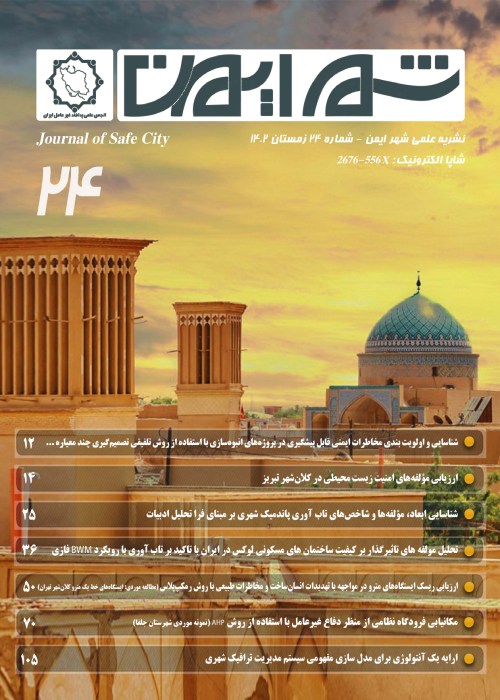Explaining and measuring spatial-spatial indicators of urban resilience in the face of floods; Case study: Babolsar city
Natural disasters, which are part of the process of human life and their number and diversity are increasing every day, are a major challenge to achieve sustainable development of human societies. Hence, the prevailing view of focusing solely on reducing vulnerability to increasing resilience to disasters has shifted. The purpose of this study is to explain the spatial-spatial characteristics of urban resilience in the face of floods in Babolsar. The methodology of qualitative research is based on content analysis and the statistical population in the qualitative and quantitative sections is composed of managers with academic and executive backgrounds and experts in urban organizations. Statistical samples were selected purposefully based on the snowball method. The sample size in the qualitative section has reached theoretical saturation (5 people) so that in the quantitative section the sample size includes 30 experts and specialists in the city of Babolsar who have been experts in the field of floods and issues related to the city. After explaining the indices, the obtained indices were prioritized using Friedman test in SPSS software and the samples of Babolsar city were measured in terms of spatial-spatial resilience using t-test. Findings from the qualitative section and theoretical studies showed that the criteria of spatial resilience included diversity, relevance, redundancy, robustness and crisis management. The results of the quantitative section in terms of prioritization of indicators have shown that the index of urban areas in the first priority, the index of resistance of the road and bridge construction system are in the second priority. Also, the results of sample t-test showed that the spatial-spatial resilience of Babolsar city in the face of floods with an average of 3.60 and a value of t, 3.09 was in a good condition, which indicates the relatively high resilience of Babolsar city in Is equal to a flood. The results indicate that increasing coordination with various organizations, training high-level crisis managers, holding public training courses for office workers and the general public can be promoted and increase the spatial productivity of Babolsar city. Against floods; Be an important and significant way forward.
- حق عضویت دریافتی صرف حمایت از نشریات عضو و نگهداری، تکمیل و توسعه مگیران میشود.
- پرداخت حق اشتراک و دانلود مقالات اجازه بازنشر آن در سایر رسانههای چاپی و دیجیتال را به کاربر نمیدهد.


